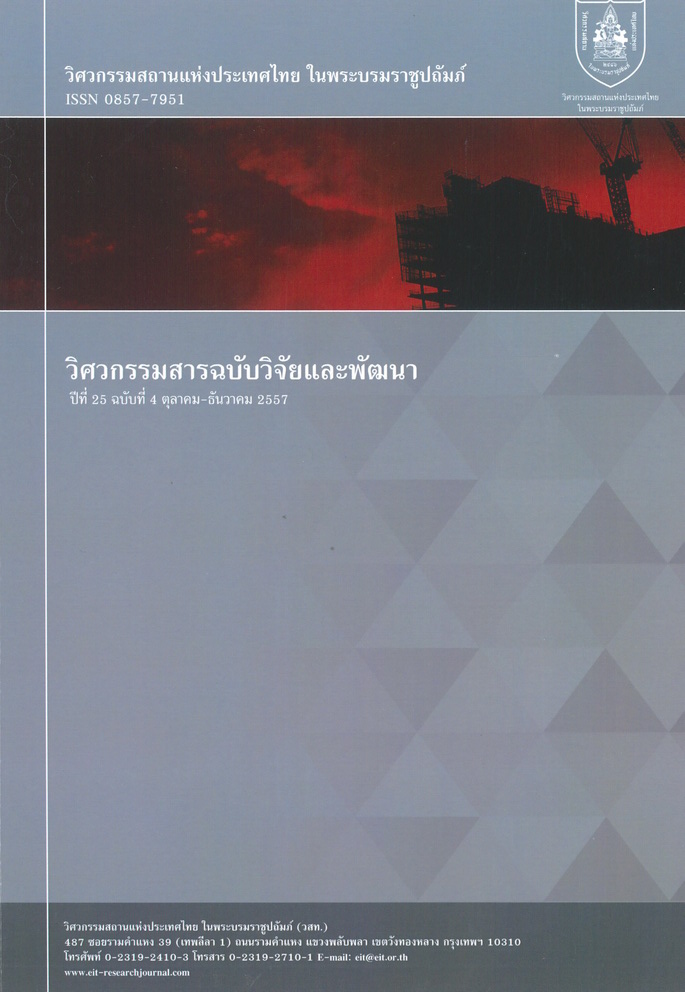SEISMIC RESPONSE ANALYSIS BY APPROXIMATE METHOD FOR SERVICEABILITY ASSESSMENT OF BUILDING
Main Article Content
Abstract
บทความนี้นำเสนอวิธีการวิเคราะห์โดยประมาณสำหรับการตรวจสอบความเหมาะสมด้านการใช้งานของอาคารภายใต้แผ่นดินไหว วิธีการประมาณนี้ใช้ค่าอัตราส่วนของสติฟเนส แบบเฉือนต่อแบบดัด () และค่าคาบการสั่นพื้นฐานของอาคารเป็นข้อมูลเริ่มต้น การศึกษาแสดงขั้นตอนของวิธีและเสนอค่า
เพื่อใช้งานสำหรับอาคารตัวอย่าง 4 หลัง ผลการวิเคราะห์คุณสมบัติเชิงพลศาสตร์ของอาคารตัวอย่างพบว่ามีความสอดคล้องดีกับผลจากแบบจำลองไฟไนต์เอลิเมนต์โดยเฉพาะในโหมดต่ำและสำหรับอาคารสูง จากนั้นได้ทำการสร้างคลื่นแผ่นดินไหวจำลองที่เหมาะสมกับพื้นที่รุงเทพมหานครเพื่อใช้วิเคราะห์ผลตอบสนองของอาคารและพบว่า วิธีการประมาณให้ผลที่ค่อนข้างถูกต้องเมื่อเทียบกับผลจากวิธีวิเคราะห์การตอบสนองแบบประวัติเวลา โดยมีความแตกต่างประมาณ 5% สำหรับค่าการเสียรูปที่ชั้นบนสุดและ 15% สำหรับค่าความเร่งสูงสุดที่ชั้นบนสุด
Article Details
The published articles are copyright of the Engineering Journal of Research and Development, The Engineering Institute of Thailand Under H.M. The King's Patronage (EIT).


